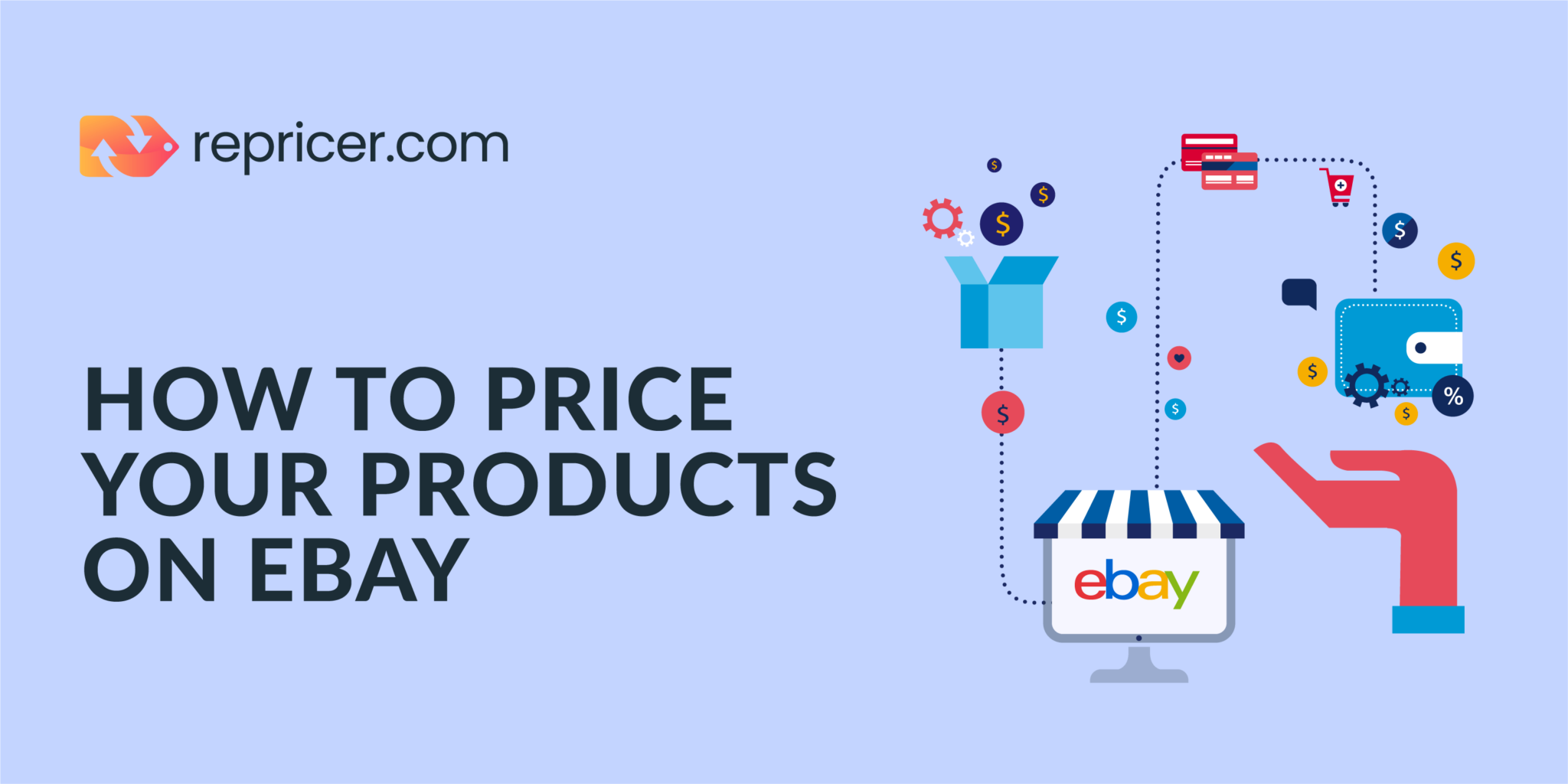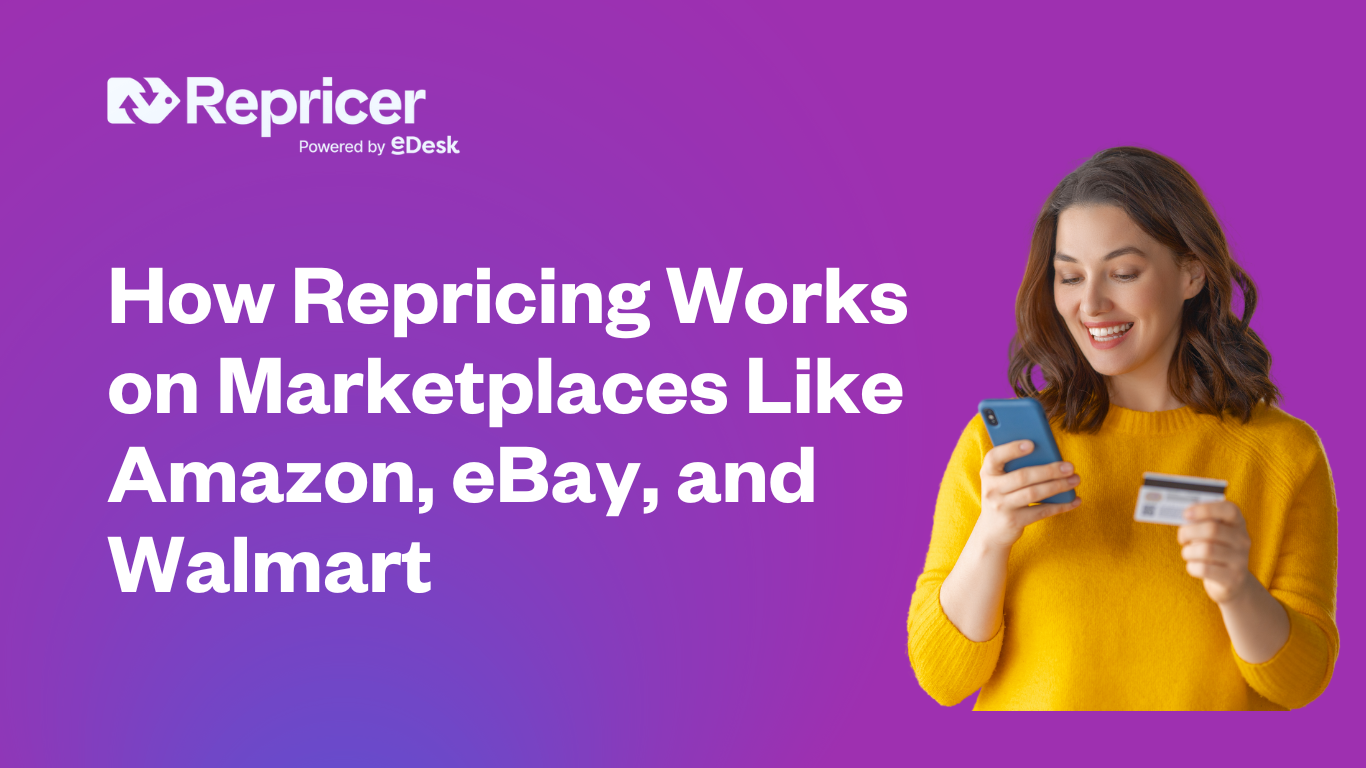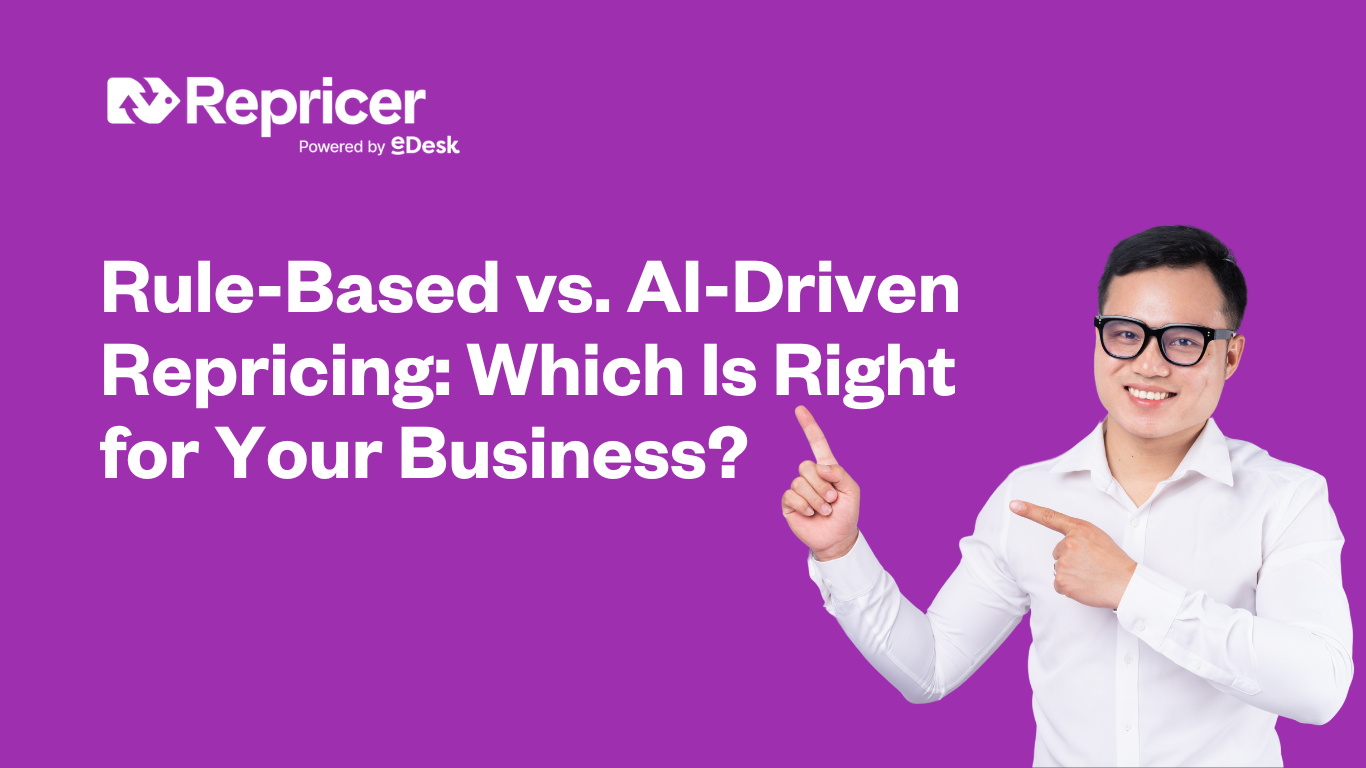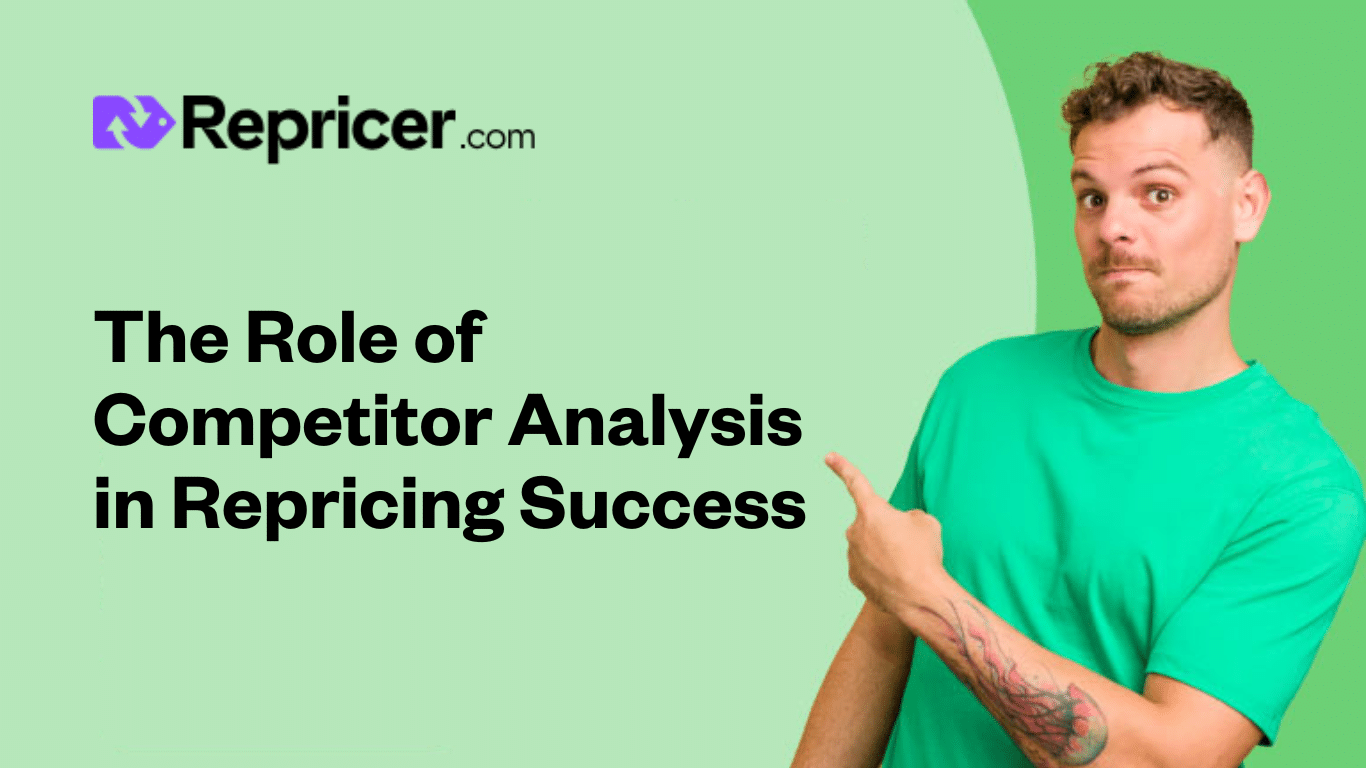Selling on eBay appears simple in theory. Decide what to sell, source it, list it and then sit back and enjoy the profits! In reality though, while it is indeed straightforward to set up an eBay business, ensuring it is a profitable one is a little more challenging and this comes down to your eBay pricing.
After all, while it would be fantastic if we ran our businesses purely for pleasure, this is not the case, and the whole point of having an eBay business is to make a profit – and a decent one at that.
Anyone can just ‘turn money’. Making a profit on the other hand, well that’s the reason eBay businesses are started in the first place, so you must get your eBay pricing right. Not only so that you can enjoy a profit, but so that you can position your products competitively within your niche.
So, let’s take a look at the best ways you can price your products on eBay to stay competitive, achieve greater sales and increase your profits.
Optimize Your eBay Listings
Optimizing your eBay listings to ensure you make sales can appear daunting. There are so many factors to consider – your description, keywords, images, shipping options and of course your pricing is also vital. As much as we would like to think that if you’re selling a quality product, your price shouldn’t matter – it really does. And if your products are not priced effectively, they will not stand a fair chance of selling.
You want to make money and how you set your pricing tells shoppers the value that you place on your product. Your product might be fantastic quality, but you don’t want to alienate shoppers with a price that is too high. Besides this, you don’t want to set your prices so low that shoppers dismiss your product as being a budget version and ‘too cheap to be good quality.”
Most shoppers will take a whole host of factors into account when making the decision to purchase a product online:
- Price
- Shipping cost
- Shipping and delivery speed
- Stock availability
Yet price is definitely one of the top influencing factors, so you should think carefully when setting your eBay pricing. This determines the likelihood of a potential customer becoming a paying customer!
According to Price Intelligently “a 1% price improvement can result in an 11.1% increase in operating profit”, so it’s clear that your eBay pricing is an essential part of your listing strategy to get right.
What Not to Do
- Don’t set your eBay prices based on what YOU would like to achieve.
- Don’t ‘guess’ what shoppers might pay for your product.
- Don’t calculate whether a product is profitable AFTER sourcing!
So, how should you set your eBay pricing effectively? There are several logical steps you should take, starting with your listing format.
eBay Pricing: Auction Style or Fixed Price?
To an extent, the type of eBay listing you choose will dictate your pricing strategy. You’ll have the option of using an auction-style listing or a fixed-price listing on eBay. Your choice will be based on your product, and its demand.
Auction Style Listings

With an auction-style listing, shoppers will bid on your product during a set period of one, three, five, seven or 10 days and the highest bidder at the close of the auction will win your item.
Auctions are generally set with a low starting bid, typically 99p, to ensure your product gets noticed and of course to prompt bids.
There is also an option to set a reserve price at auction – a minimum amount that you are willing to sell your product for. If the reserve price is not met by the time bidding closes, your product remains unsold. Alternatively, you may wish to set a Buy It Now (fixed price) as a backup which allows shoppers the option to purchase immediately rather than bidding.
The Pros: Your product may sell at a higher price than you are expecting if you have many bidders competing for the product, so excellent profits can be achieved.
The Cons: It is the market that will determine the final sale price of your item. This means that you will never have a clear idea of your profit until your listing has closed. Not only that but you run the risk of your product selling for a loss, or not selling at all. You will also need to wait for your auctions to end, so sales are not immediate.
Best For: Unique or one-off products (new or pre-owned) that are in high demand or products that don’t need to be sold quickly and that you are prepared to wait for the ‘best price’ for.
Tip: The Buy It Now price on auction-style listings has to be at least 40% higher than the starting price.
Fixed Price Listings

You may instead choose to list your products using the fixed price (Buy It Now) format only. This is simply a set price, determined by you, that shoppers can use to purchase your products immediately.
You can choose to list multiple quantities for 10 days, 30 days or Good Till Cancelled. The ‘Best Offer’ option is also available with fixed-price listings. This allows shoppers to submit an offer for your product based on what they are willing to pay – then you decide whether to accept or make a counter-offer.
The Pros: You can list multiple products for long periods and more-or-less forget about them! Buyers can purchase quickly and pay, which is an attractive option for those who want to get their hands on a product quickly. As a seller, you’ll always know what profit you will make, due to the fixed price. The ‘Best Offer’ function can also help you if your products are slow to sell – tweak your price based on the most common prices coming in on offers, and you will make more sales!
The Cons: You must research well and set your price accordingly. Some initial tweaking of pricing will be required to get your listing price right.
Best For: Generic products that you want to sell in high volumes and fast!
The listing style you choose will be based on your objectives, and this will determine how you set your eBay pricing, but whichever listing method you choose, before you list you’ll need to calculate the following:
- Product cost
- eBay and PayPal fees
- Shipping cost including packaging
If you choose auction-style listings, to ‘break-even’ if your product doesn’t get bid up, you must ensure your starting bid covers your product cost, your eBay fees and shipping, so this means you may not be able to start the bidding at 99p (unless you are prepared to risk a loss.)
With a fixed price listing you won’t run the risk of a loss as your price will be static and will guarantee you make a profit.
So, how do you determine the optimum price you can achieve for your products? Research is the key.
Related: The Ultimate Sales Guide for eBay Sellers
3 Steps for Effective eBay Pricing
1. Use eBay’s Pricing Recommendations
eBay is a competitive place, that much is known. But to check out every single one of your competitor’s pricing would not be a good use of your time. Besides it would take you forever and even then, using that information, it would still be confusing trying to work out where your pricing should sit among all the others.
This is where eBay’s pricing recommendations tool can help you out. It’s an easy way of finding the average price of products similar to yours. But a word of warning – it is only a recommendation, and the data is computer generated with some reports stating that prices are often a little on the low side, so you should undertake additional research too. It’s also only available on the US, UK, and DE sites. That said, it’s a good starting point to get you in the right ballpark.
When you list a new product, eBay will show you a price range along with a handy graph which shows you how likely your product is to sell at any one of the particular price recommendations.
If you then edit your listing details, you’ll see any adjustments also made to how likely your product is to sell. Use the ‘Sold items’ feature in addition to this, and you’ll see all the similar products that have already sold in the price range. You’ll at least then have some peace of mind that it’s not a completely random pricing recommendation.
2. Research Similar eBay Listings
Checking out each of your competitor’s listings to view their pricing is, as we have already concluded, likely to be a challenging task. However, some amount of competitor pricing research is vital for you to be able to make the best decision on your own eBay pricing.
The simplest way to do this for free is to use the advanced search option on eBay.
To find specific products, enter your keywords. So, for example, if you are selling a leather wallet, add your keywords and click search. You can also enter other details such as a price range, condition and shipping options if you wish so that you’re comparing the prices of products that are most closely related to yours. The more specific you are, the better you’ll be able to determine the best price for your product.
This search will return results relating to your product so you’ll be able to view current listings of similar items, see their list prices and thus work out the average.
If you want to take it a step further and view only those listings which have sold, simply tick the ‘sold listings’ box to filter the results.
By viewing the ‘sold listings’ results, you will get a clearer idea of exactly how much similar products have sold for and in what quantities so you can price your eBay products even more accurately.
Filter further using the ‘Buying Formats’ and ‘Condition’ filters:
3. Incorporate Pricing Psychology!
Ok, so while not strictly a way to determine the best price, once you have the fundamental research under your belt having taken eBay’s recommendations and your own research into account, you are then in a position to employ a little psychology to the mix. You can, in fact, change a shopper’s perception of a price just by altering how the price actually looks.
A product priced at $9.99 appears a more attractive offer than the same product priced at $10.01 even though there is little between them.

The same applies to rounded figures; $20 appears lazy and looks like you’ve rounded it up to make it nice and tidy, whereas $19.97 seems to be a fair price that has had some thought put into it!
So, not only does your price matter but also your actual numbers when it comes to eBay pricing!
The best thing about applying some psychology to your eBay pricing is that you may achieve sales even when your product is priced higher than your competitors.
Keep Your eBay Pricing Effective
Once you have decided on your pricing, you should be aware that tweaks may be required from time to time and that means both price increases and decreases. This can happen due to new competition, higher demand, lower demand or influencing factors which are out of your control, such as economic events. Taking time to do your due diligence and test your pricing is the best way to keep on top of the effectiveness of your eBay pricing.
1. Never Undercut Your Competition
This is a sure-fire way to start a race to the bottom. You undercut your competitor and then before you know it they have come right back at you and dropped their price too. You do the same. So do they, until eventually your products are selling way below their real market value and neither of you is making any profit. If another seller undercuts you, stand your ground.
2. Don’t Underestimate Your Costs
It’s not just the cost of your product you need to consider. There’s also your eBay and PayPal fees, your shipping cost including all your packaging supplies. Then there’s your time. This is a big part of your business costs that often get overlooked. You will have spent time researching and sourcing products, if you’re not using a fulfilment service you will have spent hours packing orders and shipping them – those costs should also be factored in.
3. Consider Negotiating on Price
Testing is critical, and, if you use the ‘best offer’ option on your fixed price listings, you’ll get the opportunity to negotiate with your customers in the most comfortable format possible. Having calculated your profit margins, you’ll know whether you can afford to jump into negotiations or not. If you receive lots of offers way under your list price, the chances are that your product is priced slightly too high – so use that information and drop your price. The same applies if you receive very few offers and also no sales. If you receive only moderate offers and they are only slightly less than your asking price, then your price is probably about right.
Related: 8 Proven Ways to Recession-Proof Your eBay Business
Final Thoughts
When it comes to eBay pricing, you don’t have to set the same price as your competitors, you may simply choose to use their eBay pricing as a starting point. How you price your products will not only determine whether you attract shoppers but will also put you in a better position to achieve eBay Top Rated Seller Status, which will give you enhanced visibility in the search results.
Try Repricer.com’s advanced eBay repricing for free today. Create rule-based repricing strategies to beat your eBay competitors and increase your sales. Our super-fast eBay repricing works across all 20 eBay marketplaces.
See what our customers have to say!






